
cobas
®
4800 System
System Manual
Software Version 2.1

cobas® 4800 System
System Manual
Roche Diagnostics
2 System Manual · Version 1.0
Document information
Revision history
Edition notice
This manual is for users of the cobas
®
4800 System.
Every effort has been made to ensure that all the information contained in this
manual is correct at the time of printing. However, Roche reserves the right to make
any changes necessary without notice as part of ongoing product development.
Any customer modification to the cobas® x 480 instrument or cobas® z 480 analyzer
will render the warranty or service agreement null and void.
Software updates are done by Roche Service representatives.
The screenshots in this publication have been added exclusively for the purpose of
illustration. Configurable and variable data such as parameters, results, path names
etc. visible therein must not be used for laboratory purposes.
Intended use The system is intended to be used as a diagnostic or screening system providing
sample preparation, amplification and detection of specific targets from human
samples.
It is important that the operator reads this manual and the test-specific Operator’s
Manual thoroughly before using the system.
The system is to be used by laboratory professionals trained in laboratory techniques
and by instruction on the use of the system.
Copyright © 2013, Roche Diagnostics International Ltd. All rights reserved.
Trademarks The following trademarks are acknowledged:
COBAS, COBAS Z, and LIFE NEEDS ANSWERS are trademarks of Roche.
All other trademarks are the property of their respective owners.
Feedback Every effort has been made to ensure that this manual fulfills the intended purpose as
mentioned above. All feedback on any aspect of this manual is welcome and will be
considered during updates. Please contact your Roche representative, should you
have any such feedback.
Instrument approvals The instrument and the analyzer meet the protection requirements laid down in IVD
Directive 98/79/EC.
Furthermore, the analyzer is manufactured and tested according to the following
international standards:
o IEC 61010-1
o IEC 61010-2-101
o UL 61010-1
o CAN/CSA C22.2 No. 61010-1
This manual meets the European Standard EN ISO 18113-3.
Compliance is demonstrated by the following marks:
Manual version Software version Revision date Changes
1.0 2.1 April 2013
Table 1 Revision history

Roche Diagnostics
System Manual · Version 1.0 3
cobas® 4800 System
System Manual
Contact addresses
Complies with the IVD directive 98/79/EC.
Issued by underwriters laboratories, Inc. (UL) for Canada and the US.
CUS
®
Roche Molecular Systems, Inc.
1080 U.S. Highway South
Branchburg, NJ 08876-1760
USA
Made in Switzerland
Roche Diagnostics GmbH
Sandhofer Strasse 116
68305 Mannheim
Germany

cobas® 4800 System
System Manual
Roche Diagnostics
4 System Manual · Version 1.0

Roche Diagnostics
System Manual · Version 1.0 5
cobas® 4800 System
System Manual
Table of contents
Document information 2
Contact addresses 3
Table of contents 5
Preface 7
How to use this manual 7
Where to find information 7
Conventions used in this manual 7
System description
1 General safety information
Safety classifications 15
Safety precautions 16
Safety summary 18
Safety labels on the system 25
Disposal 27
2 Overview
System overview 31
3 Hardware
Instrument 39
Analyzer 65
Control unit 69
4 Software
Basic software elements 73
Database 81
Configuration
5 Configuration
Configuration 87
User management 92
Exporting support data 97
Result counters 98
Maintenance
6 Maintenance
Safety information 103
Instrument maintenance 104
Analyzer maintenance 115
Troubleshooting
7 Troubleshooting
Overview 129
Messages work area 131
About result flags 134
General troubleshooting 136
Hardware troubleshooting 138
Glossary
8 Glossary
Index
Index 149
Revisions

Roche Diagnostics
6 System Manual · Version 1.0
cobas® 4800 System
System Manual

Roche Diagnostics
System Manual · Version 1.0 7
cobas® 4800 System
System Manual
Preface
The system integrates fully automated total nucleic acid isolation directly from
primary and secondary tubes, automated PCR setup, and real time PCR.
This manual covers the complete system comprised of the cobas® 4800 software, the
instrument used for sample preparation, and the analyzer used for amplification and
detection using real time PCR.
How to use this manual
Q
o Keep this manual in a safe place to ensure that it is not damaged and remains available
for use.
o This manual should be easily accessible at all times.
To help you find information quickly, there is a table of contents at the beginning of
the manual and each chapter. In addition, a complete index can be found at the end
of the manual.
Where to find information
In addition to this manual, the following documents are also provided to assist in
finding desired information quickly:
Test-specific Operator’s Manuals For each test, there is a specific Operator’s Manual which describes how to prepare
and perform a run, and how to handle results.
Test-specific package insert For each test, there is a package insert which provides additional information. For
example, instructions on storage and handling of reagents, samples and controls.
Conventions used in this manual
Visual cues are used to help locate and interpret information in this manual quickly.
This section explains formatting conventions used in this manual.
Symbols The following symbols are used:
Symbol Used for
P Start of procedure
S End of procedure
o List item
U Cross-reference
h Call-up (software reference)
Table 2 Symbols used

cobas® 4800 System
System Manual
Roche Diagnostics
8 System Manual · Version 1.0
Abbreviations The following abbreviations are used:
Product names The following product names are used:
Q Tip
Safety alert
Electrical and electronic equipment marked with this symbol are
covered by the European Directive 2002/96/EC on waste electrical
and electronic equipment (WEEE).
The symbol denotes that the equipment must not be disposed of in
the municipal waste system.
Symbol Used for
Table 2 Symbols used
Abbreviation Definition
AD Amplification and detection
ANSI American National Standards Institute
cc cubic centimeter
cLLD Capacitive Liquid Level Detection
CSA Canadian Standards Association
dBA decibel weighted against the A-frequency response curve. This curve
approximates the audible range of the human ear.
DIL Diluent
DWP Deepwell Plate
EC European community
e.g. exempli gratia – for example
EMC ElectroMagnetic Compatibility
EN European standard
i.e. id est – that is to say
IEC International Electrical Commission
iSWAP internal Swivel Arm Plate handler
IVD In Vitro Diagnostic
KVA kilovolt-Ampere
LED Light Emitting Diode
LIS Laboratory information system
MWP Microwell plate
n/a not applicable
PCR Polymerase Chain Reaction
QC Quality Control
SD Standard deviation
UL Underwriters Laboratories Inc.
UPS Uninterruptible Power Supply
WEEE Waste Electrical and Electronic Equipment
XML Extensible Markup Language
Table 3 Abbreviations

Roche Diagnostics
System Manual · Version 1.0 9
cobas® 4800 System
System Manual
Product name Abbreviation
cobas® 4800 software software
cobas x 480 instrument instrument
cobas z 480 analyzer analyzer
cobas
®
4800 System
system
Table 4 Product names

cobas® 4800 System
System Manual
Roche Diagnostics
10 System Manual · Version 1.0

System description
1 General safety information.............................................................................................................. 13
2 Overview .......................................................................................................................................... 29
3 Hardware.......................................................................................................................................... 37
4 Software............................................................................................................................................ 71


Roche Diagnostics
System Manual · Version 1.0 13
cobas® 4800 System 1 General safety information
Table of contents System Manual
General safety information 1
In this chapter, you will find information on the safe operation of the system.
In this chapter
Chapter
1
Safety classifications.............................................................................................................15
Safety precautions.................................................................................................................16
Operator qualification ...................................................................................................16
Safe and proper use of the system................................................................................16
Miscellaneous safety precautions.................................................................................17
Safety summary ....................................................................................................................18
Warning messages..........................................................................................................18
Electrical safety.........................................................................................................18
Optical safety............................................................................................................18
Biohazardous materials ...........................................................................................19
Waste..........................................................................................................................19
Explosion and fire risk ............................................................................................20
Caution messages...........................................................................................................20
Mechanical safety.....................................................................................................20
Reagents and consumables .....................................................................................21
Interfering substances in samples ..........................................................................21
Evaporation of samples or reagents.......................................................................21
Incorrect results due to two barcode labels or incorrect specimen labeling....22
Incorrect results due to wrongly typed sample IDs.............................................22
Carryover ..................................................................................................................22
Hot surfaces ..............................................................................................................22
Malfunction due to interfering electromagnetic fields .......................................22
Data security.............................................................................................................23
Notices.............................................................................................................................23
Moving parts.............................................................................................................23
Circuit breakers and fuses.......................................................................................24
Spillage.......................................................................................................................24
Safety labels on the system..................................................................................................25
Safety labels on the instrument ....................................................................................25
Safety labels on the analyzer .........................................................................................26

Roche Diagnostics
14 System Manual · Version 1.0
1 General safety information cobas® 4800 System
Table of contents System Manual
Disposal .................................................................................................................................27
Disposal of the instrument ...........................................................................................27
Disposal of the analyzer ................................................................................................27
Disposal of control unit components ..........................................................................27

Roche Diagnostics
System Manual · Version 1.0 15
cobas® 4800 System 1 General safety information
System Manual Safety classifications
Safety classifications
This section explains how precautionary information is presented in this manual.
The safety precautions and important user notes are classified according to the
ANSI Z535.6 Standard. Familiarize yourself with the following meanings and icons:
Safety information
r The safety alert symbol by itself without a signal word is used to promote awareness to
hazards which are generic or to direct the reader to safety information provided
elsewhere in the document.
These symbols and signal words are used for specific hazards:
WARNING
WARNING
r Indicates a hazardous situation which, if not avoided, could result in death or serious
injury.
CAUTION
CAUTION
r Indicates a hazardous situation which, if not avoided, could result in minor or moderate
injury.
NOTICE
NOTICE
r Indicates a hazardous situation which, if not avoided, could result in damage to
equipment.
U For more information about product safety labels, see Safety labels on the system (p. 25)
Important information which is not safety relevant is indicated by the following
symbol:
Q
Tip
Indicates additional information on correct use of the system or useful tips.

Roche Diagnostics
16 System Manual · Version 1.0
1 General safety information cobas® 4800 System
Safety precautions System Manual
Safety precautions
Safety information
r Particular attention must be paid to the following safety precautions. If these safety
precautions are ignored, the operator may suffer serious or fatal injury. Each
precaution is important.
Operator qualification
Operators are required to have a sound knowledge of relevant guidelines and
standards as well as the information and procedures contained in all relevant
manuals.
o Do not carry out operation and maintenance unless you have been trained by
Roche Diagnostics.
o Carefully follow the procedures specified in all relevant manuals for operation
and maintenance.
o Leave maintenance, installation, or service that is not described in the manuals to
trained Roche Service personnel.
o Follow standard laboratory practices, especially when working with biohazardous
material.
Safe and proper use of the system
Personal protective equipment o Be sure to wear appropriate protective equipment, including, but not limited to,
safety glasses with side shields, fluid resistant lab coat, and approved disposable
gloves.
o Wear a face shield if there is a chance of splash or splatter.
Accuracy/precision of measured
results
o Do not use reagents that have exceeded their expiry date, otherwise inaccurate
data may be obtained.
o For diagnostic purposes always assess the results in conjunction with the patient’s
medical history, clinical examination, and other findings.
o Each laboratory must verify that reagent performance meets the published
specifications.
Installation o Unpacking and installation must be performed by trained Roche Service
personnel only.
o Leave installation that is not described in this manual or the test-specific
Operator’s Manuals to trained Roche Service personnel.
Correct use o Use the instrument only for preparing liquid samples with the provided reagents.
Operating conditions o Operation outside of the specified ranges, e.g. with excessive environmental
temperature and/or humidity, may lead to incorrect results or malfunction of the
instrument or analyzer.
o Use the instrument and analyzer as indicated in the technical specifications.
o Make sure that the instrument’s and analyzer’s ventilation openings remain
unobstructed at all times.

Roche Diagnostics
System Manual · Version 1.0 17
cobas® 4800 System 1 General safety information
System Manual Safety precautions
o Perform maintenance according to the specified intervals to maintain the
operating conditions of the instrument and analyzer.
o Keep all manuals in a safe place to ensure that it is not damaged and remains
available for use. All manuals must be easily accessible at all times.
Approved parts Use of non-approved parts or devices may result in malfunction of the instrument or
analyzer and may render the warranty null and void. Only use parts and devices
approved by Roche Diagnostics.
Third-party software Installation of any third-party software that is not approved by Roche Diagnostics
may result in incorrect behavior of the system or the software. Do not install any
non-approved software.
Miscellaneous safety precautions
Power interruption A power failure or momentary drop in voltage may lead to data loss. Operation with
an uninterruptible power supply (UPS) is strongly recommended. Check the UPS
regularly to make sure it functions properly.
If there is a power failure, the analyzer is disconnected from the control unit. The
displayed maintenance status of the analyzer may not be correct. To get the correct
maintenance status, refresh the analyzer under Overview > System > cobas z480 tab.
Electromagnetic fields Devices that emit electromagnetic waves may cause the instrument or analyzer to
malfunction. Do not operate the following devices in the same room where the
instrument or analyzer are installed:
o Mobile phone
o Transceiver
o Cordless phone
o Other electrical devices that generate electromagnetic fields
Data backup There is an automatic backup process that stores the data on the D drive. It is the
customers responsibility to perform regular backups of all measurement results.
Relocation and transportation Do not attempt to relocate or transport the instrument or analyzer. Leave relocation
and transportation to personnel trained or authorized by Roche.
U For additional details, see Disposal (p. 27)

Roche Diagnostics
18 System Manual · Version 1.0
1 General safety information cobas® 4800 System
Safety summary System Manual
Safety summary
This safety summary contains the most important and general warning and caution
messages. Additionally, you will find specific safety information at the beginning of
Part Maintenance (p. 101) and in the test-specific Operator’s Manuals.
U For more information about the safe use of the system, refer to the test-specific package
insert.
Warning messages
WARNING
List of warning messages
r Before operating the system, read the warning messages contained in this summary
and in all relevant manuals carefully. Failure to observe them may result in death or
serious injury.
Electrical safety
WARNING
Electrical shock by electronic equipment
r Do not attempt to work in any electronic compartment.
r Do not remove any cover of the instrument or analyzer other than those specified in
this manual or the test-specific Operator’s Manual.
r Do not touch any parts of the instrument or analyzer other than those specified.
Especially do not touch any power supply parts.
r Never remove the middle grounding prong from the power cable or defeat its purpose
by using an ungrounded adapter.
r Installation, service, and repair must only be performed by personnel authorized and
qualified by Roche.
r Observe the system safety labels as illustrated in section Safety labels on the system
(p. 25)
Optical safety
WARNING
Loss of sight due to staring into laser beam
The barcode reader on the autoloader of the instrument contains a class II laser diode.
r Do not stare into the laser transmitter beam as eyesight may be severely damaged.

Roche Diagnostics
System Manual · Version 1.0 19
cobas® 4800 System 1 General safety information
System Manual Safety summary
Biohazardous materials
WARNING
Infection by samples and associated materials
Contact with samples containing material of human origin may result in infection. All
materials and mechanical components associated with samples of human origin are
potentially biohazardous. Therefore, universal precautions should be taken when handling
and processing samples.
r Follow standard laboratory practices, especially when working with biohazardous
material.
r Keep the main cover closed and in place while the instrument is operating.
r Do not open the thermal block cycler door during operation.
r When working with the main cover open while the instrument is powered on (e.g., for
cleaning or maintenance), always put the instrument in Maintenance mode or in
Shutdown status first.
r Be sure to wear appropriate protective equipment, including, but not limited to, safety
glasses with side shields, fluid resistant lab coat, and approved disposable gloves.
r Wear a face shield if there is a chance of splash or splatter.
r If any biohazardous material is spilled, wipe it up immediately and apply disinfectant.
r If sample or liquid waste comes into contact with your skin, wash it off immediately
with soap and water, and apply a disinfectant. Consult a physician.
WARNING
Infection and injury due to sharp objects
When wiping sharp objects, use several layers of gauze.
r Be careful to not puncture yourself.
r Be sure to wear appropriate protective equipment, for example gloves.
Waste
WARNING
Infection by biohazardous waste
Liquid and solid waste originates from samples collected in media that inactivate
potentially biohazardous material. However, as with all human-derived solutions, universal
precautions should be taken when handling waste.
Contact with liquid waste or used pipetting tips may result in infection. All materials and
mechanical components that come into contact with waste are potentially biohazardous.
Therefore, universal precautions should be taken when handling waste.
r Be sure to wear protective equipment. Take extra care when working with protective
gloves; these can easily be pierced or cut which can lead to infection.
r If any biohazardous material is spilled, wipe it up immediately and apply disinfectant.
r If liquid waste comes into contact with your skin, wash it off immediately with soap and
water, and apply a disinfectant. Consult a physician immediately.
r Observe the system safety labels as illustrated in section Safety labels on the system
(p. 25)
WARNING
Contamination of the environment by liquid waste and solid waste
The waste generated during the procedure is potentially biohazardous.
r When disposing of any liquid or solid waste, do so according to the appropriate local
regulations.
U For information about disposal, see Disposal (p. 27)

Roche Diagnostics
20 System Manual · Version 1.0
1 General safety information cobas® 4800 System
Safety summary System Manual
Explosion and fire risk
WARNING
Explosion through sparks
Hazard of explosion through sparks.
r Keep all potentially flammable or explosive material (e.g. anesthetic gas) away from the
instrument or analyzer.
WARNING
Fire risk through usage of sprays
Spraying liquid on the power supply parts can cause a short circuit and result in a fire.
r During fire-fighting operations disconnect the equipment from the main power supply.
r Keep the cover closed while the instrument and analyzer is connected to the main
power supply, and do not use sprays in the vicinity of the instrument and analyzer.
Caution messages
CAUTION
List of caution messages
r Before operating the system, read the caution messages contained in this summary
and in all relevant manuals carefully. Failure to observe them may result in minor or
moderate injury.
Mechanical safety
CAUTION
Personal injury due to contact with moving parts
The pipetting head of the instrument moves rapidly during sample preparation. The main
cover is locked during operation, protecting the user from moving parts.
r Keep the main cover closed and in place while the instrument is operating.
r When working with the main cover open while the instrument is powered on (e.g., for
cleaning or maintenance), always put the instrument in Maintenance mode or in
Shutdown status first.
r Do not touch any parts of the instrument or analyzer other than those specified. Keep
away from moving parts during instrument operation.
r Do not remove any carrier from the instrument deck while the instrument is operating.
r Keep the main cover closed and in place while the instrument is operating.
r During operation and maintenance of the instrument, proceed according to the
instructions.
r Observe the system safety labels as illustrated in section Safety labels on the system
(p. 25)
Page is loading ...
Page is loading ...
Page is loading ...
Page is loading ...
Page is loading ...
Page is loading ...
Page is loading ...
Page is loading ...
Page is loading ...
Page is loading ...
Page is loading ...
Page is loading ...
Page is loading ...
Page is loading ...
Page is loading ...
Page is loading ...
Page is loading ...
Page is loading ...
Page is loading ...
Page is loading ...
Page is loading ...
Page is loading ...
Page is loading ...
Page is loading ...
Page is loading ...
Page is loading ...
Page is loading ...
Page is loading ...
Page is loading ...
Page is loading ...
Page is loading ...
Page is loading ...
Page is loading ...
Page is loading ...
Page is loading ...
Page is loading ...
Page is loading ...
Page is loading ...
Page is loading ...
Page is loading ...
Page is loading ...
Page is loading ...
Page is loading ...
Page is loading ...
Page is loading ...
Page is loading ...
Page is loading ...
Page is loading ...
Page is loading ...
Page is loading ...
Page is loading ...
Page is loading ...
Page is loading ...
Page is loading ...
Page is loading ...
Page is loading ...
Page is loading ...
Page is loading ...
Page is loading ...
Page is loading ...
Page is loading ...
Page is loading ...
Page is loading ...
Page is loading ...
Page is loading ...
Page is loading ...
Page is loading ...
Page is loading ...
Page is loading ...
Page is loading ...
Page is loading ...
Page is loading ...
Page is loading ...
Page is loading ...
Page is loading ...
Page is loading ...
Page is loading ...
Page is loading ...
Page is loading ...
Page is loading ...
Page is loading ...
Page is loading ...
Page is loading ...
Page is loading ...
Page is loading ...
Page is loading ...
Page is loading ...
Page is loading ...
Page is loading ...
Page is loading ...
Page is loading ...
Page is loading ...
Page is loading ...
Page is loading ...
Page is loading ...
Page is loading ...
Page is loading ...
Page is loading ...
Page is loading ...
Page is loading ...
Page is loading ...
Page is loading ...
Page is loading ...
Page is loading ...
Page is loading ...
Page is loading ...
Page is loading ...
Page is loading ...
Page is loading ...
Page is loading ...
Page is loading ...
Page is loading ...
Page is loading ...
Page is loading ...
Page is loading ...
Page is loading ...
Page is loading ...
Page is loading ...
Page is loading ...
Page is loading ...
Page is loading ...
Page is loading ...
Page is loading ...
Page is loading ...
Page is loading ...
Page is loading ...
Page is loading ...
Page is loading ...
Page is loading ...
Page is loading ...
Page is loading ...
Page is loading ...
Page is loading ...
Page is loading ...
-
 1
1
-
 2
2
-
 3
3
-
 4
4
-
 5
5
-
 6
6
-
 7
7
-
 8
8
-
 9
9
-
 10
10
-
 11
11
-
 12
12
-
 13
13
-
 14
14
-
 15
15
-
 16
16
-
 17
17
-
 18
18
-
 19
19
-
 20
20
-
 21
21
-
 22
22
-
 23
23
-
 24
24
-
 25
25
-
 26
26
-
 27
27
-
 28
28
-
 29
29
-
 30
30
-
 31
31
-
 32
32
-
 33
33
-
 34
34
-
 35
35
-
 36
36
-
 37
37
-
 38
38
-
 39
39
-
 40
40
-
 41
41
-
 42
42
-
 43
43
-
 44
44
-
 45
45
-
 46
46
-
 47
47
-
 48
48
-
 49
49
-
 50
50
-
 51
51
-
 52
52
-
 53
53
-
 54
54
-
 55
55
-
 56
56
-
 57
57
-
 58
58
-
 59
59
-
 60
60
-
 61
61
-
 62
62
-
 63
63
-
 64
64
-
 65
65
-
 66
66
-
 67
67
-
 68
68
-
 69
69
-
 70
70
-
 71
71
-
 72
72
-
 73
73
-
 74
74
-
 75
75
-
 76
76
-
 77
77
-
 78
78
-
 79
79
-
 80
80
-
 81
81
-
 82
82
-
 83
83
-
 84
84
-
 85
85
-
 86
86
-
 87
87
-
 88
88
-
 89
89
-
 90
90
-
 91
91
-
 92
92
-
 93
93
-
 94
94
-
 95
95
-
 96
96
-
 97
97
-
 98
98
-
 99
99
-
 100
100
-
 101
101
-
 102
102
-
 103
103
-
 104
104
-
 105
105
-
 106
106
-
 107
107
-
 108
108
-
 109
109
-
 110
110
-
 111
111
-
 112
112
-
 113
113
-
 114
114
-
 115
115
-
 116
116
-
 117
117
-
 118
118
-
 119
119
-
 120
120
-
 121
121
-
 122
122
-
 123
123
-
 124
124
-
 125
125
-
 126
126
-
 127
127
-
 128
128
-
 129
129
-
 130
130
-
 131
131
-
 132
132
-
 133
133
-
 134
134
-
 135
135
-
 136
136
-
 137
137
-
 138
138
-
 139
139
-
 140
140
-
 141
141
-
 142
142
-
 143
143
-
 144
144
-
 145
145
-
 146
146
-
 147
147
-
 148
148
-
 149
149
-
 150
150
-
 151
151
-
 152
152
-
 153
153
-
 154
154
Roche cobas z 480 User manual
- Type
- User manual
- This manual is also suitable for
Ask a question and I''ll find the answer in the document
Finding information in a document is now easier with AI
Related papers
Other documents
-
 Ultimate Innovations by the DePalmas 6005 Operating instructions
Ultimate Innovations by the DePalmas 6005 Operating instructions
-
Tandberg Data 2U Autoloader 6.4 LTO3 User manual
-
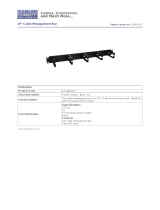 Cables Direct UT-8800CM Datasheet
Cables Direct UT-8800CM Datasheet
-
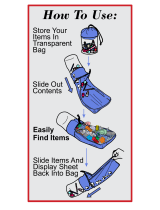 Display Abricay Maker Bag Set User guide
Display Abricay Maker Bag Set User guide
-
 Hologic Detection Reagent Kit Operating instructions
Hologic Detection Reagent Kit Operating instructions
-
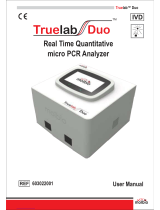 Molbio Truelab Duo User manual
Molbio Truelab Duo User manual
-
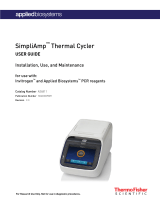 Applied Biosystems SimpliAmp Thermal Cycler User manual
Applied Biosystems SimpliAmp Thermal Cycler User manual
-
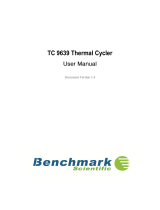 Benchmark T5000-96 User manual
Benchmark T5000-96 User manual
-
Quantum FastStor 2 User manual
-
OvisLink XENON 2U Datasheet
































































































































































